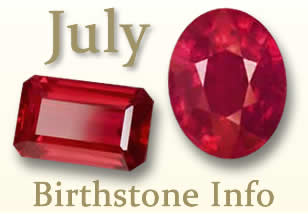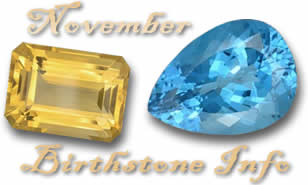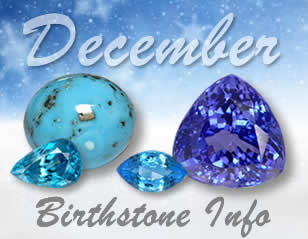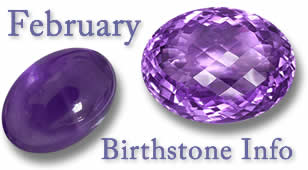What can I find in this article?
- What is the color of the October birthstones?
- The History of the October birthstones
- What is the meaning of the October birthstones?
- The healing properties of the October birthstones
- What about crystal elixirs?
- What is the durability of the October birthstone?
- Cleaning and caring for opal and tourmaline
- How much do October gemstones cost?
- Are there any secondary October birthstones?
- Final Thoughts
The October Birthstones - Opal and Tourmaline
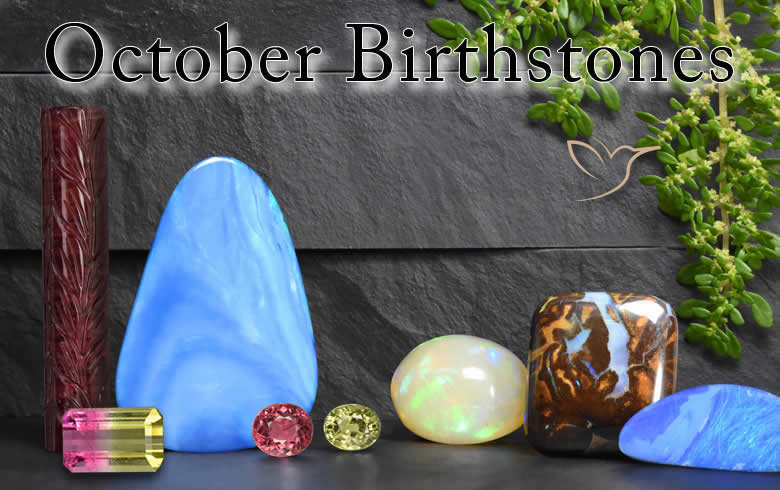
The month of October is rather unique when it comes to birthstones. Two birthstones and powerful healing crystals, opal and the tourmaline, share the place of the October birthstone. These two gemstones both resonate with October and influence the two zodiac signs of Libra and Scorpio.
The beautiful and increasingly rare opal is the birthstone of the zodiac sign of Libra. The planet of Venus rules this charming sign, and an opal worn on a chain can help Libra to find balance.
Tourmaline is sometimes thought of as the secondary birthstone, but it is the one stone which can help the intense Scorpio to manage his or her daily life. Worn as an amulet against negative energy, tourmaline can help Scorpio to overcome feelings of resentment.
Most of this opal is "common opal" or "potch" and has a milky or pearly luster known as "opalescence". There are, however, rare specimens of opal that produce radiant color flashes when turned in the light. This effect is known as a "play-of-color" and specimens of opal that display a play-of-color are known as "precious opal". If the play-of-color is of high quality and the stone is large enough to cut, it can be used to produce highly valuable gemstones.
There are three conditions under which precious opal's play-of-color can be observed under bright indoor or outdoor light:
- when the stone is moved
- when the light source is moved
- when the angle of observation is changed.
Precious opal possesses a distinctive microscopic structure often likened to a box filled with layers of ping-pong balls. When light penetrates this structure, it diffracts, splitting into the visible spectrum of colors and creating the mesmerizing rainbow effect known as play-of-color.
Opals are found in a magnificent range of colors. Clear, or colorless is perhaps the most common color, but there is a veritable universe of opals with names such as Andean Opal, Hydrophane Opal, Moss Opal, and Owyhee Blue Opal. Below, we have broken down the color characteristics of five of the most common types of precious opal:
- White or light opal is translucent to semi-translucent, with play-of-color against a white or light gray background color, called "bodycolor".

- Black opal is translucent to opaque, with play-of-color against a black or other dark background.
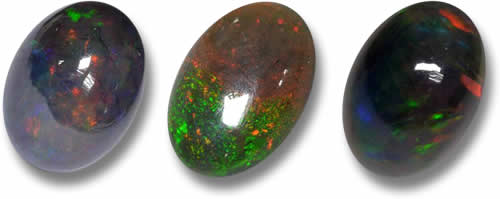
- Fire opal is transparent to translucent, with brown, yellow, orange, or red bodycolor. This material, which often doesn't show play-of-color, is also known as "Mexican Opal".
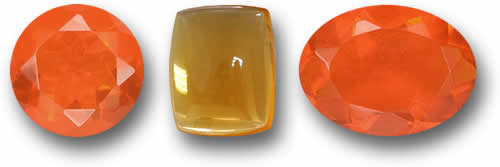
- Boulder opal is translucent to opaque, with play-of-color against a light to dark background. Fragments of the surrounding rock, called matrix, become part of the finished gem.

- Crystal or water opal is transparent to semitransparent, with a clear background. This type shows exceptional play-of-color.
Tourmaline has one of the widest color ranges of any gemstone species and encompasses virtually every hue. Some of these varieties have become so popular that they have inspired their own trade names.
Here are some below:
- Chrome Tourmaline is intense green; however this color is a result of vanadium, not chromium.

- Indicolite is the name given to dark violetish blue, blue, or greenish blue tourmaline.

- Paraiba is an intense violetish blue, greenish blue, or blue tourmaline from the state of Paraiba, Brazil.

- Parti-colored Tourmaline displays more than one color zone. One of the most common of which is a green and pink parti tourmaline, but there are many others.

- Rubellite refers to pink, red, purplish red, orangish red, or brownish red tourmaline.

- Watermelon Tourmaline is pink in the center and green around the outside. Like its namesake, these crystals are often sliced to display this unique pattern.

Opal's etymology is a fairly contested one; there are basically two camps: one that traces the name back to Sanskrit, and the other that attributes it to a Greek word. Upala is a Sanskrit word that means "precious stone" or "gemstone". It is commonly believed that the Romans were the first to significantly trade in opal, believing it to be the most powerful of gemstones, for it contained every color of all other known gemstones. In any event, they definitely called it opalus.
Those who support the Greek etymology as the origin for opal, base their argument upon the Greek word opallios, meaning mean "to see a change in color", referring to opal's iridescence.
Those who are contrary to this theory maintain that the Greek word opallios was derived from the Roman opalus for, prior to the Roman invasion of Greek lands, the Greeks used the word paederos to refer to precious stones, particularly opal and amethyst.
In the origin myths of the Australian aborigines, the Creator came down to Earth on a rainbow, spreading the message of peace to all humankind. At the place where his foot touched the ground, the stones came to life, glimmering in all the colors of the rainbow. These stones became opals.
The Bedouins - Arabian nomads - believed opals were magic stones, animated with lightning, then falling from heaven during thunderstorms. In Greek mythology, opals were said to be Zeus' tears of joy after his victory over the Titans.
The Aztecs called Fire Opal the "Stone of the Bird of Paradise" after Quetzalcoatl, the feathered serpent and creator of the universe. To them, opal could stimulate the cycle of creation and destruction.
The first recorded market for opal was during the Roman Empire. Due to precious opal's rare ability to show the colors of other gemstones, the Romans thought it was the most prized and powerful of all, and used opal to show off their high status in society.
Many historians agree that the majority of these opals came from Hungary.
Mark Antony, the famous Roman politician and general, is well known for his romance with Cleopatra, among other escapades. It is told that he coveted an opal that belonged to Nonius, a fellow senator, as the shimmering play-of-color reminded him of nights spent with Cleopatra. In an act of stellar defiance, Nonius refused to sell the gemstone (said to be worth $80,000) and was forced to flee Rome in order to save his life, leaving behind all of his possessions, except for the prized opal.
It is said that one Roman emperor considered trading one-third of his kingdom for a single opal. Napoleon I, the first emperor of France, famously gave his empress, Josephine, a stunning red-flashing opal called "The Burning of Troy". Queen Victoria re-popularized the fashion of wearing opals during her time as the British matriarch.
The first known opal relics were discovered in a cave in Kenya; geologists have dated these opals from around 4000 BC and theorize that they originated from Ethiopia. Nearly six millennia later, miners rediscovered Ethiopian opals and introduced them to the market.
Hungary was one of the major opal producers with two locations in Dubník and the Tokaj Mountains. Precious opal and a transparent yellow-orange common opal, called honey opal, were mined there; however Hungarian opal production slowed dramatically by the end of the 18th century and is mostly non-existent today.
Australia quickly became the world's primary source of the October birthstone in the 1890s when commercial mines first opened. Since then, Australia has dominated opal production, contributing over 90% of the market share.
The most valuable opals come from Queensland and New South Wales in Australia, which have been the main producer of opals since their discovery in the 1870's.
Today, opals are mostly found in Australia, Mexico, the USA, South America, Britain, Canada, Brazil, Czech Republic and Slovakia.
Tourmaline was first discovered in the 16th century by Spanish and Portuguese conquistadores who found green and blue tourmaline while panning for gold and mistook it for emerald and sapphire. This common inability among ancient gemstone traders to differentiate tourmaline from other precious stones is indicated by the etymology of the name itself: turmali is a Sinhalese (a Sri Lankan language) word for "mixed gems", and was first used to refer to all the colored crystal gems found on the island of Sri Lankan, then known as Ceylon. In fact, pink and red tourmaline were thought to be rubies.
By the late 1600s, Dutch traders were importing great quantities of the brightly colored Sri Lankan tourmalines to Europe in order to satisfy a growing demand for gemstones and other curiosities. The tourmaline satisfied both of these categories as, in addition to its visible attraction as a gemstone, it was also called "The Ceylonese Magnet", for its pyroelectric ability to attract and repel hot ashes.
In 1793, tourmaline was formally classified as a distinct mineral and by the early to mid-1800s, tourmaline was mined extensively in the United States, particularly in Maine and California, leading it to become known as an American gemstone. Despite its growing popularity in the United States, the primary market for American tourmaline in the 19th century was China.
The Chinese Dowager Empress Tz'u His had become so fond of pink and red tourmaline, that much of the pink and red tourmaline from San Diego County in California was shipped to China where craftsman fashioned it into an array of shapes, from flowers and animals to boxes and bottles. Many of these relics - some more than 200 years old - are on display in museums today as a testament to the stone's durability.
American tourmaline miners were so dependent on Chinese trade that the 1912 fall of the Chinese government spelled disaster for the US tourmaline market and a great deal of mines were forced to close.
With the discovery of large tourmaline deposits in Brazil during the first half of the 20th century, the supply of tourmaline began to expand dramatically. Starting around the 1950s, new tourmaline mines began to appear all around the world, including Mozambique, Madagascar, Namibia, Tanzania, Afghanistan, Pakistan, Russia, and the United States. Madagascar and Afghanistan are particularly well known for producing fine red tourmaline.
Europeans have long considered opal a symbol of hope, purity, and truth. In fact, throughout most of history, opal has been regarded as the luckiest and most magical of all gems because it can show all colors. Once, it was thought to have the power to preserve the life and color of blond hair.
A highly seductive stone, opal has always been associated with love and passion, as well as desire and eroticism.
Wearing an opal is said to bring about loyalty and faithfulness. Many wearers claim opals have the ability to improve emotional stability, saying they feel calmer when they wear an opal.
Opal has the ability to intensify emotional states and release inhibitions, as well. It is often associated with cosmic consciousness, dynamic creativity and can help to induce visions.
The Fire Opal is said to promote business relationships and help you to succeed.
The significance of tourmaline varies slightly throughout its color range; however, the fundamental trait common to them all is transformative energy. Tourmaline has enormous power, especially the powers to heal and protect. Let's look at the meaning behind a few of the most popular colors.
Blue tourmaline has a peaceful quality and promotes tranquility. It provides the courage necessary for clear and honest communication from the heart. Wearing this color variety of the October birthstone can help one become more tolerant and lead to a harmonious life.
Red tourmaline embodies life-force energies and can rejuvenate relationships of the heart. This color variety, also called Rubellite, brings joy, passion and a renewed sense of commitment to a romantic union.
Black tourmaline transforms negative energies - both psychic and physical - into positive ones and can protect the body from environmental pollutants and radiation.
Green tourmaline's healing energy is directed toward the heart and center of the body. It also supports masculine virility, courage, stamina and strength. The vibrations from green tourmaline connect with the Earth to make the heart more receptive to love.
Pink tourmaline is associated with femininity and flows toward the heart, the seat of love and compassion. This color variety imparts tenderness and patience to the wearer during times of growth and change.
Opal has been known to be extremely beneficial to the immune system and effective in fighting infections. It is also said to purify the blood and kidneys, regulate insulin, help strengthen the memory and promote the health of the eyes, hair, nails and skin.
Opal is also related to female hormones. It can alleviate the discomfort of PMS and menopause, as well as promote ease during childbirth. Moreover, opal is reported to be beneficial in balancing the body's water content, overcoming dehydration, and alleviating water retention.
Opal has also been known to stabilize neurotransmitter disturbances, such as Parkinson's disease, as well as help people who are suffering from drug addiction and other chemical dependencies, giving them the strength and stability to regain control of their lives.
The healing properties of tourmaline vary with color and relate to the energies bound to each hue. Overall, tourmaline has been said to maintain a healthy digestive system, as well as strengthening teeth and bones. This October birthstone is also recommended by gemstone healers to treat adrenal disorders, mental and physical stress, and various forms of trauma. Let's look at some of the specific abilities of a few popular color varieties.
Blue tourmaline has a range of health benefits and it is thought that it can help to support the pulmonary system, specifically with ailments of the larynx, throat, esophagus, lungs, thyroid and thymus. Blue tourmaline has been known to be especially helpful in treating sinus infections. It is also associated with the brain and can help you to think clearer.
Blue Tourmaline is becoming an increasingly rare, and if you feel that this is the gemstone for you, you should snap it up!
A green tourmaline birthstone can help to release tension, aide with weight loss and strengthen the nervous system. It can also bring comfort to anyone undergoing physical manipulation of the skeletal structure. Furthermore, green tourmaline may re-invigorate the body and its immune system, fight chronic fatigue, and help regulate hyperactivity in children.
Black tourmaline is often used to heal ailments and injuries of the back, legs, knees, ankles and feet. It has also been reported that black tourmaline can assuage the pain and discomfort of arthritis and other conditions of the joints and muscles. Finally, black tourmaline may remove toxins from the body, boost the immune system and revitalize the adrenal glands.
Pink tourmaline is used to treat physical conditions of the heart, especially for those who are recovering from a heart attack. Pink tourmaline is also known to aide in the treatment of gynecological disorders, as well as impart a sense of calm during the upheaval of puberty.
Similar to pink tourmaline, red tourmaline is used to promote good cardiovascular health. Its properties can benefit the reproductive system, as well as blood circulation in the digestive tract, liver, lungs, pancreas and spleen. Red tourmaline can also be used to treat depression, hysteria and obsessive compulsive disorders.
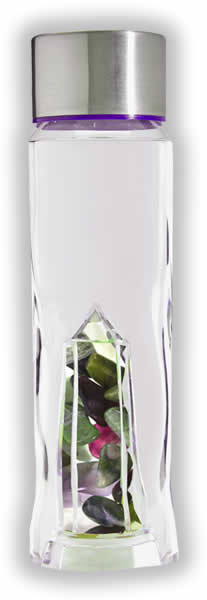
Crystal elixirs have been used throughout history and are associated with a range of health benefits. Making your own is not difficult at all. It is said that crystal elixirs made with your birthstone during your birth month are the most potent.
You can buy ready-made crystal or birthstones elixirs, but if you have your own birthstone, there is no reason not to prepare an elixir for yourself.
Gem remedies, or crystal elixirs, are prepared by immersing the piece in a glass or bowl of clean water, then placing it in the sunlight to activate its energy. Leave this setup for about 12 hours, then pour the contents into a clean glass bottle. Brandy can be added to ensure the elixir lasts for a longer period of time.
It is commonly believed the crystal passes its subtle healing properties into the water. Both opals and tourmalines are safe to use in this way as they are non-toxic.

Ranging from 5 to 6.5 on the Mohs hardness scale, opal is considerably softer than gemstones such as quartz and topaz, leaving it vulnerable to scratches from a host of other materials that you may encounter while wearing opal jewelry. Moreover, opal generally consists of anywhere from 3% to 30% water; this characteristic gives it a toughness rated as poor to fair, which leaves it fairly brittle and susceptible to chips and fractures.
Regarding opal's stability (its resistance to chemical or environmental attack), heat from intense light or other sources can cause fracture lines called "crazing", while sudden temperature changes can cause opal to fracture, as well. Opal is attacked by hydrofluoric acid and caustic alkaline solutions, such as those found in rust stain and water spot removers.
If you would like to wear a precious opal in a ring, it is highly recommended that you select a setting that will protect this October birthstone with plenty of metal, or a surrounding guard of harder gemstones, such as amethyst or sapphire.
Opal is perfectly suitable in pendants, necklaces and earrings, provided that the wearer exercises good judgement and avoids wearing this October birthstone jewelry in any situation where it may experience rough conditions or hard surfaces.
Tourmaline is considerably harder than opal and is as hard as quartz - sometimes harder.
Keep in mind that quartz is the second most abundant mineral on Earth, behind feldspar; its inescapable presence has the potential to scratch everything below it on the Mohs hardness index. Tourmaline's hardness protects it from that danger.
With regard to its toughness, or tenacity, as it is known in mineralogy, tourmaline is rated as fair - higher than opal - yet is still considered brittle and should be protected from chips and cracks.
While tourmaline is unaffected by chemicals or light, intense heat can damage it by altering its color. Thermal shock (sudden changes in temperature) can cause tourmaline to fracture.
Overall, tourmaline has a fairly high durability and is ideally suited for everyday-wear jewelry, such as rings, bracelets, pendants, earrings and brooches.
Opals are often treated by impregnation with oil, wax, or plastic, as well as modifications to their surface, called sugar treatment or smoke treatment. Due to its relative instability, various treatments and water content, the only safe way to clean opal is in warm, soapy water with a very soft brush. It should be rinsed with clean water and dried with a soft cloth.
Always remove opal jewelry before doing physical work around the house or back yard, as well as before exercising, swimming or bathing, applying makeup or fragrances, and using any caustic cleaning chemicals.
When storing opals, keep in mind that they may be scratched or chipped by harder, more durable gemstones. Keep them safe in a separate space of your jewelry box, surrounded by foam, felt, or other fabric coverings. You may also choose to keep your opals in an acid-free paper envelope, and stored in a paper parcel organizer.
Tourmaline does not typically undergo as many types of treatment as opal, though it is sometimes given a heat treatment to improve clarity and color. These alterations, however, are stable and unaffected by cleaning, provided that the method is the same as opal: warm, soapy water, scrubbed with a soft brush and dried with a soft towel. Ultrasonic and steam cleaners are not recommended for tourmaline.
Tourmaline's unique pyroelectric property causes it to attract more dirt and grime; therefore, it may need to be cleaned more frequently than other gemstones. As always remove any jewelry or gemstones before exercising, cleaning or engaging in harsh physical activities such as sports. Store tourmaline gemstones away from other gemstones to avoid scratches. It is best to wrap gemstones in soft cloth or place them inside a fabric-lined jewelry box.
As with all gemstones, color, cut and clarity define the value and, therefore, cost of the stone. While the higher prices of tourmaline are typically far above the most expensive opals, both October birthstones can be purchased for reasonable prices within any budget.
If you are looking for an oval cabochon to set in a ring, $20 can get you a 1 carat, Ethiopian, multicolor black opal, sized about 10 x 7mm. If you want to splash out on something truly extravagant, as well as unique, a 20 carat, pear cabochon, multicolor Australian Boulder Opal, sized about 28 x 15mm, can be yours for $500.
With such a vast array of colors and cuts available in tourmaline, its intended use in jewelry is the primary place to start when buying loose stones. Commonly used in earrings, a pair of oval orange tourmaline from Mozambique, 0.7 carat each, and sized 7 x 5 mm, can be purchased for as little as $60. If it is a piece for a ring that you are in search of, a 2.5 carat, octagonal step cut, untreated green tourmaline, sized 9 X 7 mm, can be yours for just over $200. If money is no object and you want something particularly rare, treat yourself to a bi-color, 13 carat, clear and pink tourmaline, sized 12 x 12mm for $2,000.
The gigantic diversity of the two official October birthstones - opal and tourmaline - should keep you busy enough when considering your options for birthstone jewelry. But, if you are looking for more, aquamarine was considered an October birthstone during medieval times. Today, it is officially recognized as the March birthstone; please see our article on March birthstone
Opal and tourmaline are such different gemstones; the former offering a kaleidoscope of color that evokes the origins of the universe, while the latter's vast color range and crystalline shapes makes it the ideal gemstone for fashion, as well as healing.
Both of the gemstones offer the person born in October a great range of choices when selecting their birthstone. While tourmaline is considerably harder than opal, each can be used for any jewelry setting and worn every day, given moderate caution and adequate care.

